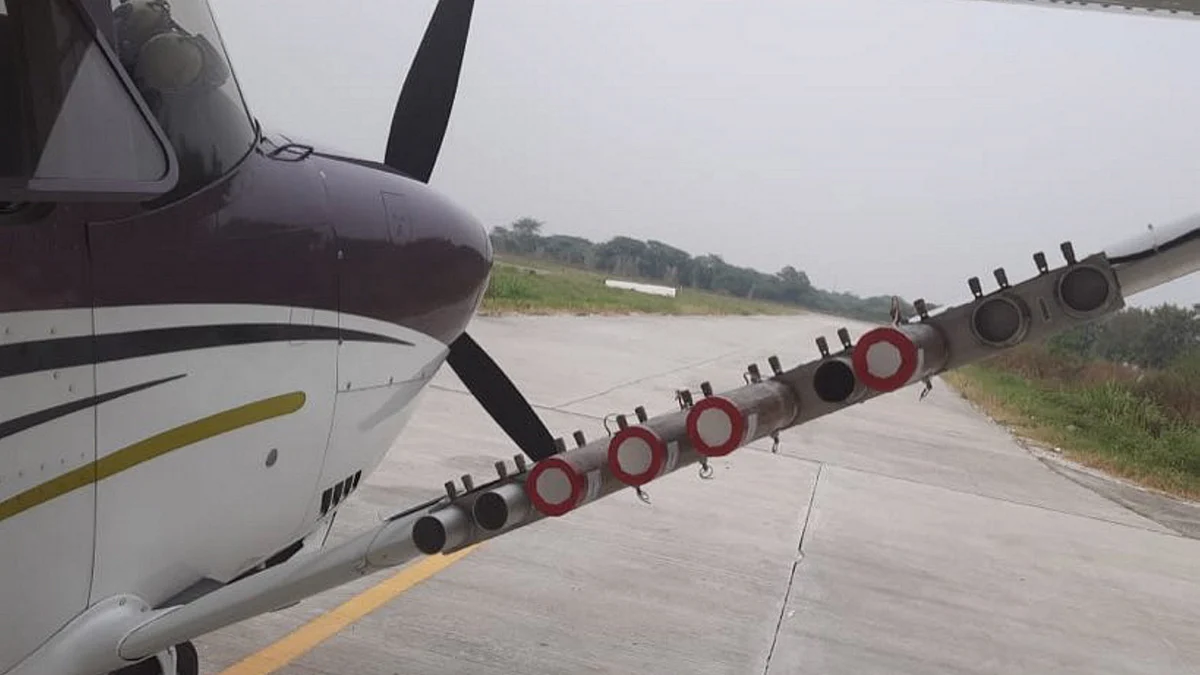Why IIT-Delhi study concluded that cloud seeding is ‘not viable’ for Delhi
The national capital’s dry, stagnant winter air makes artificial rain largely ineffective; sustained emission cuts the only real solution, scientists say

Cloud seeding — the controversial method of inducing artificial rain by dispersing chemicals into clouds — cannot be relied on to manage Delhi’s winter pollution, a new IIT-Delhi study has concluded, warning that the capital’s climatology makes the technology largely ineffective, high-cost, and short-lived as a pollution control tool.
The study, titled 'Can Cloud Seeding Help Tackle Delhi’s Air Pollution?’ was conducted at the Centre for Atmospheric Sciences and analysed a decade of weather and pollution data (2011–2021) and recent cloud-seeding trials.
It found that Delhi’s winter atmosphere lacks the moisture, saturation and vertical cloud lift required for artificial rainfall.
“There is a fundamental lack of sufficient moisture and saturation during peak pollution months,” the report said, adding that cloud-seeding should be considered only as a rare emergency intervention, not a policy tool.
Triggered by Delhi’s trial — but no rain in city
The findings come days after Delhi’s cloud-seeding experiment on October 28, led by IIT-Kanpur scientists, who released silver iodide and salt particles from an aircraft. While light rain was recorded in Noida and Greater Noida, Delhi received none despite the attempt — consistent with the study’s conclusions.
Pollution rebounds quickly even after real rain
The researchers also examined the impact of natural winter showers and found that:
only heavy rainfall meaningfully lowers PM levels
benefits last 1–5 days at most
pollution rebounds fast due to continuous emissions
ozone levels often rise after rain, worsening breathing risks
“Even when clouds cooperate, clean-air gains don’t last,” said Shahzad Gani, one of the study mentors, calling cloud seeding and smog towers “distractions and resource-intensive gimmicks”.
Cloud seeding windows rare, risky and expensive
The study notes that the only viable cloud-seeding windows are during Western Disturbances, but even then:
moisture conditions rarely align
success is uncertain
silver iodide may pose environmental risks
the cost is extremely high relative to benefit
What does work?
The report stresses only one proven long-term strategy: sustained and strict emission control across:
vehicles
construction dust
industries
biomass and stubble burning
residential heating and fuels
“Artificial rain is a desperate backup plan at best. Emission reduction remains the only real solution,” the study concludes.
Growing political pressure vs scientific advice
Successive Delhi governments have floated cloud-seeding proposals each winter, hoping for emergency relief during pollution peaks. But expert panels — including IMD, CAQM and CPCB in 2024 — have repeatedly warned that Delhi’s dry winter air simply does not support cloud seeding.
With winter pollution climbing and public health concerns growing, scientists say policymakers must stop chasing “quick fixes” and focus on cutting emissions at the source.
Follow us on: Facebook, Twitter, Google News, Instagram
Join our official telegram channel (@nationalherald) and stay updated with the latest headlines
